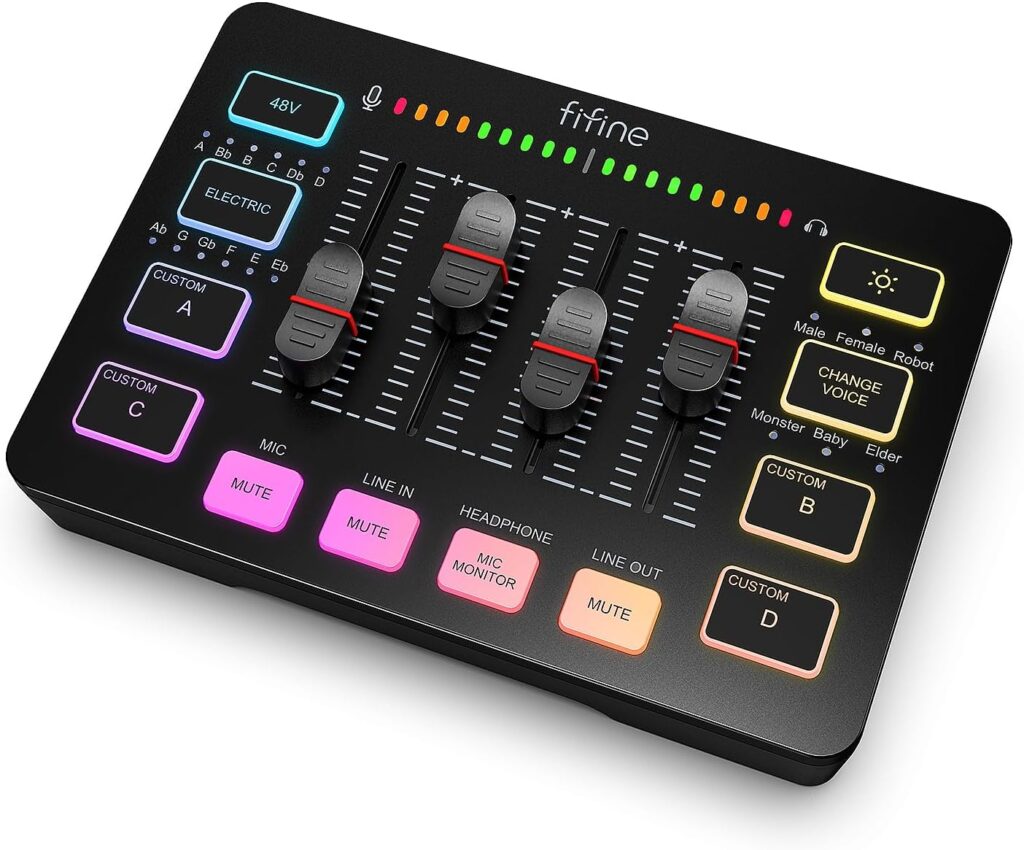Fifine SC3 Audio Mixer
The Fifine SC3 audio mixer, with its sleek design and RGB lighting, strikes a fine balance between aesthetic appeal and functionality, making it an attractive choice for gamers and home users. Its software-free, user-friendly interface, complete with intuitive controls like on-demand mute buttons and customizable soundboard options, enhances user experience. While it's optimized for use with Fifine's own microphones and may not suit professional-grade equipment, its $50 price point offers great value for those entering the world of audio mixing. The SC3 stands out as a practical, budget-friendly option for enhancing everyday audio tasks, especially for remote work, gaming, and basic content creation.
-
Build Quality
-
Features
-
Price
-
Design
Several years ago, the GoXLR audio mixer revolutionized the gaming world, offering an immersive, DJ-like experience. This innovation allowed gamers to modify their voice, manage audio playback, and juggle multiple inputs seamlessly. Its launch was a game-changer, introducing unprecedented hands-on control to the gaming community.
Despite its groundbreaking features, the GoXLR’s high price tag was a significant barrier for many. Today, its relevance has waned due to discontinued software support and a reduced price, leading some to consider the product obsolete.
This shift in the market sparked the emergence of more affordable alternatives, carving out a new niche for budget-friendly audio mixers.
In this burgeoning market, Fifine has become a popular player with their high quality, yet inexpensive products. Lately, I’ve reviewed their two more popular microphones, the XLR AM8 and USB-C A8.
These microphones already stand out for their performance, but their capabilities could be further enhanced when paired with Fifine’s SC3 audio mixer.
The SC3 offers gamers tactile control over their audio experience, including unique sound effects, soundboard features, and individual volume adjustments for multiple devices.
In this overview, we delve into the Fifine SC3 audio mixer, examining its functionalities and determining whether it earns its place on a gamer’s desk.
Welcome to my overview of the Fifine SC3 Audio Mixer.
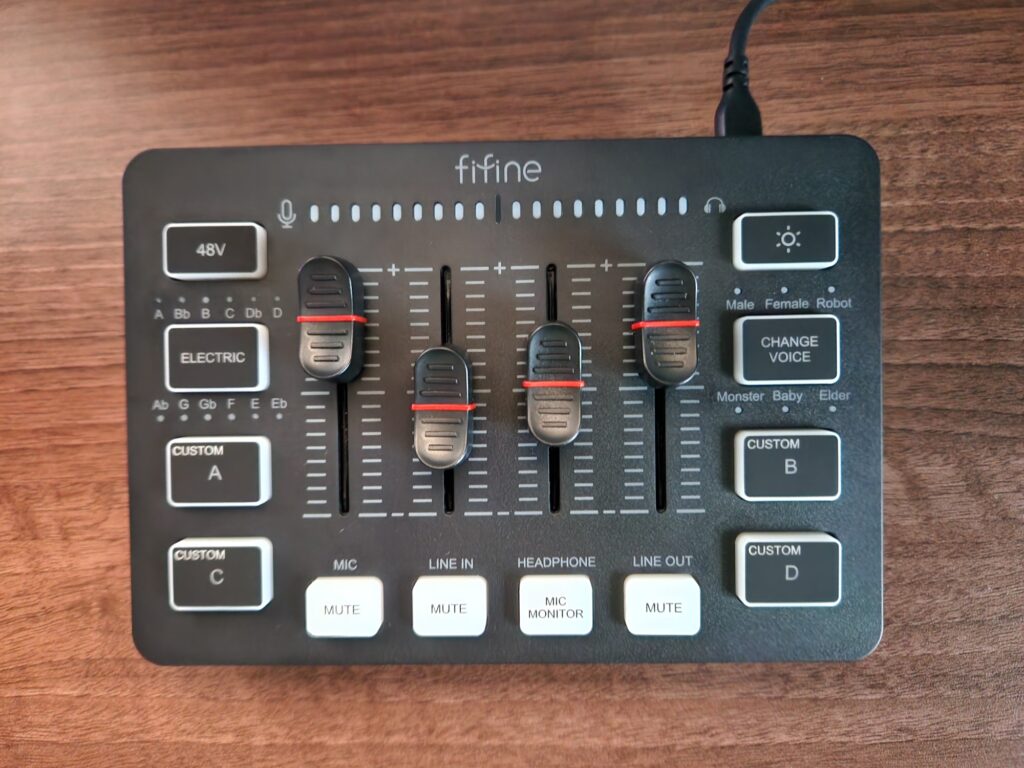
Design
Fifine’s SC3 audio mixer, marketed as a device for gamers, features a design that, from first appearances, transcends the typical “gamer” aesthetic.
Available in matte black or white, its appearance is understated yet elegant, not confined to gaming setups alone. The mixer’s design is rectangular and crafted from plastic, presenting a busy front panel with controls including multiple volume sliders, buttons, and mute toggles.
The layout of the SC3 is intuitive and functional. It boasts volume sliders for the microphone, line-in, headphones, and line-out, positioned from left to right. These sliders are made of plastic and offer a smooth glide, although there’s a slight inconsistent lateral movement noted during use.
The mixer is further equipped with distinct button sections, including a 48V XLR power boost, voice modulation controls, four customizable recording buttons, an RGB light changer, and a voice-changing feature.
The buttons are made of silicone, which gives a somewhat soft, mushy feel upon pressing. However, their responsiveness is impressive; a gentle tap on any part of a button triggers its function, with a solid white light indicating activation or muting.
A standout aspect of the SC3’s design is its extensive use of RGB lighting, which adds a vibrant, “gamer-centric” touch. Each button, slider, and output bar can be illuminated with static or dynamic RGB effects.
One thing to note is that the RGB effects do not turn off when the computer goes to sleep. If in a bedroom, it may be a slight annoyance with the glowing lights always running. The RGB can be disabled, however, by holding the RGB button for 2 seconds.
The rear of the SC3 houses its various ports. It’s powered and connected via USB-C, compatible with PCs and even a PS5. Alongside the USB-C port are the 3.5mm jacks corresponding to the front sliders, a switch for toggling between condenser and dynamic XLR microphones, and the XLR port itself.
An ingenious design feature is the concave section underneath the device, allowing cables, such as those from headphones, to neatly run underneath the unit.
The SC3 package includes a USB-C to USB-C cable (with a USB-A adapter) and a single 3.5mm cable, rounding off what is a thoughtfully designed and versatile audio mixer, appealing not just to gamers but to a broader audience seeking quality and functionality.
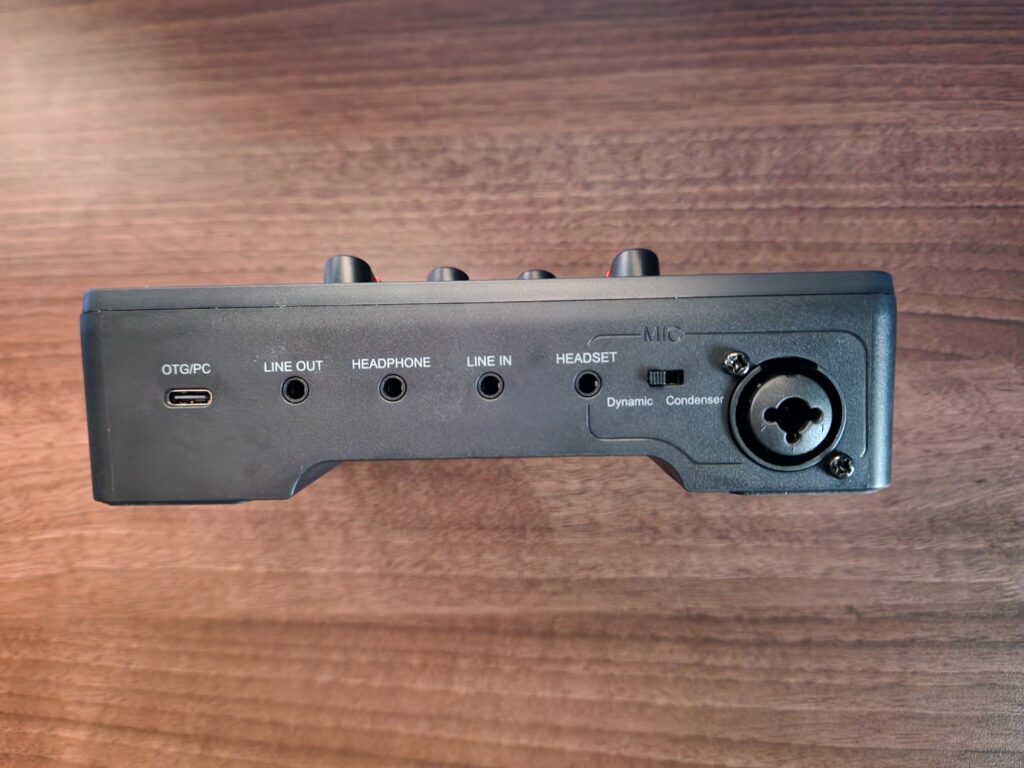
Functionality
Starting off, the Fifine SC3 most notably stands out for its software-free operation, a major advantage in my eyes. All functions are accessible directly on the device, eliminating the need for external software or applications, which can be cumbersome or insecure and allows for use on phones, PCs, Macs, and consoles.
At first, the custom buttons might seem confusing, but Fifine outlines this with a comprehensive and well-written user manual. This guide details every function and feature, reflecting Fifine’s commitment to user experience.
With Fifine’s expertise in microphones it’s evident that the SC3 is optimized for use with their own models, such as the AM8, K688, and K669C&D. These pairings work seamlessly, demonstrating the mixer’s intended capabilities.
However, it’s worth noting that the SC3 might not perform as well with more professional-grade microphones. For instance, when I tried it with my Audio-Technica AT2025, the results were subpar, likely due to the SC3’s preamp offering only 50dB gain, which Fifine themselves, on their own website, admit isn’t the most powerful.
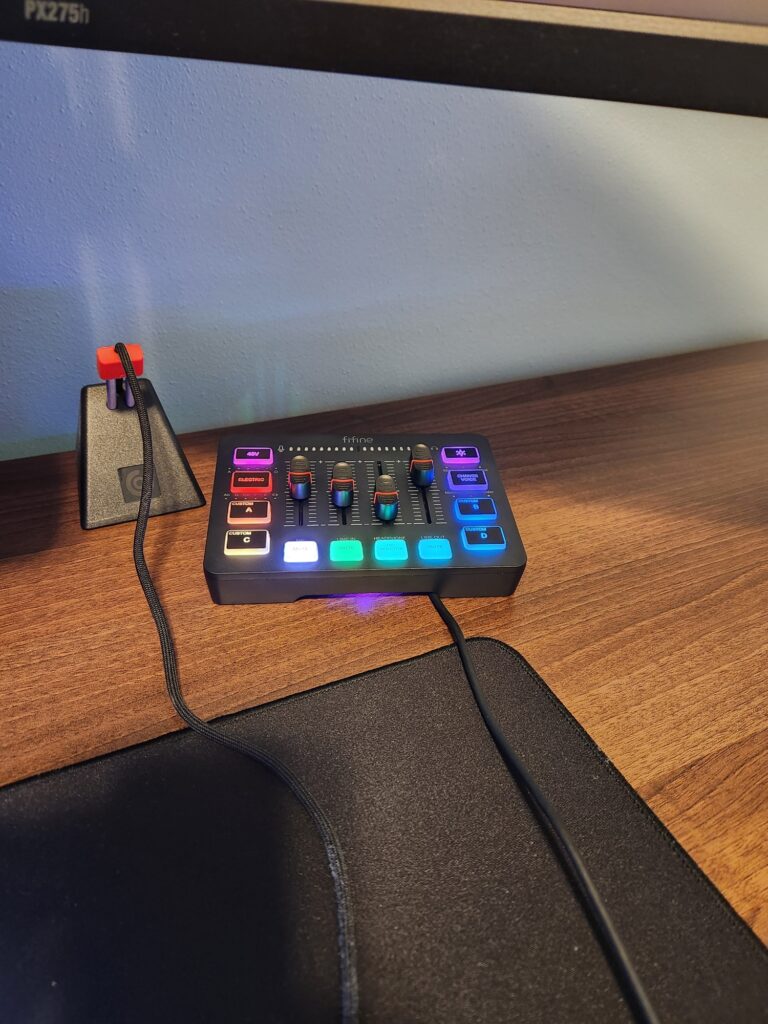
Focusing on the functionality with AM8, the SC3 effectively introduces users to the world of audio mixing. It preserves audio quality, ensuring listeners receive a consistent experience.
The voice changer, offering variations like manly, feminine, monster, robot, baby, or elderly tones, is a fun gimmick. While it’s unlikely to fool anyone, it can inject humor into your audio content. The electric tones add another layer of entertainment, allowing for a playful “autotune” effect.
The custom buttons are a highlight, essentially placing a soundboard at your fingertips. Much like Discord’s new soundboard, this feature is particularly amusing in various settings, such as adding cheers or boos during team meetings or funny noises when gaming.
The sliders are practical for real-time adjustments, especially useful for managing microphone input, muting, or dealing with background noise without resorting to software settings.
For the most part, Fifine’s SC3 provides a straightforward functionality to its users. While the SC3 is suitable for general use, I think it can truly shine for streamers and content creators.
Its combination of fun effects, quick-access controls, and volume sliders provide a level of convenience and creativity previously unavailable or difficult to use in this segment.
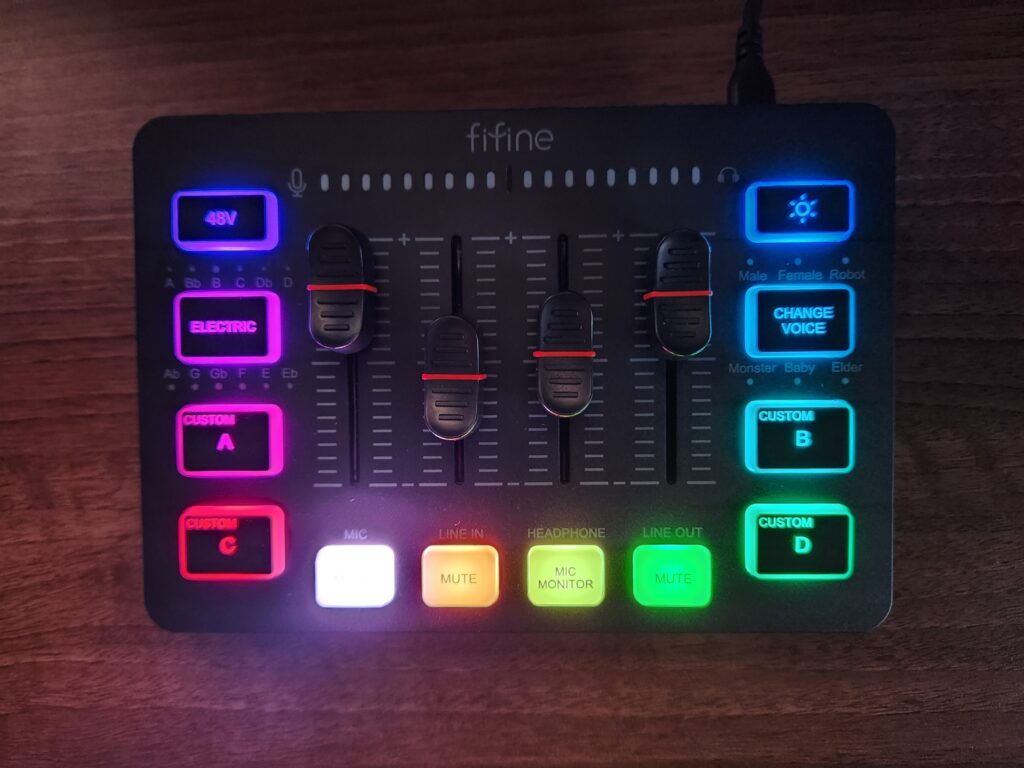
My Final Thoughts
The Fifine SC3 represents my inaugural experience with an audio mixer that extends beyond basic XLR microphone handling. In comparison to my longstanding use of the Behringer U-Phoria UM2, the SC3’s additional features present a compelling value proposition, particularly for those without professional-grade microphones.
A standout feature for me is the convenient, on-demand mute buttons. These are particularly advantageous for those working from home or needing a quick mute while gaming. It’s a small but significant detail that enhances user experience.
The inclusion of RGB effects is a welcome touch. As a gamer myself, I appreciate the aesthetic appeal of RGB lighting, and it’s satisfying to see it integrated here. It adds a bit of flair that many gamers find appealing.
Regarding the sound and voice effects, they are intriguing concepts. While they might resonate more with a younger audience, I personally found the custom soundboard buttons more practical and entertaining. This feature allows for a degree of customization and interactivity that can be quite engaging.
At a price point of $50, the SC3 is reasonably priced considering its range of features and the potential utility for users. It’s worth noting, however, that the SC3 pairs best with microphones within the Fifine ecosystem. This synergy maximizes the mixer’s capabilities and ensures optimal performance, making it a wise choice for those looking to enhance their audio setup without breaking the bank.
© 2023 Justin Vendette

